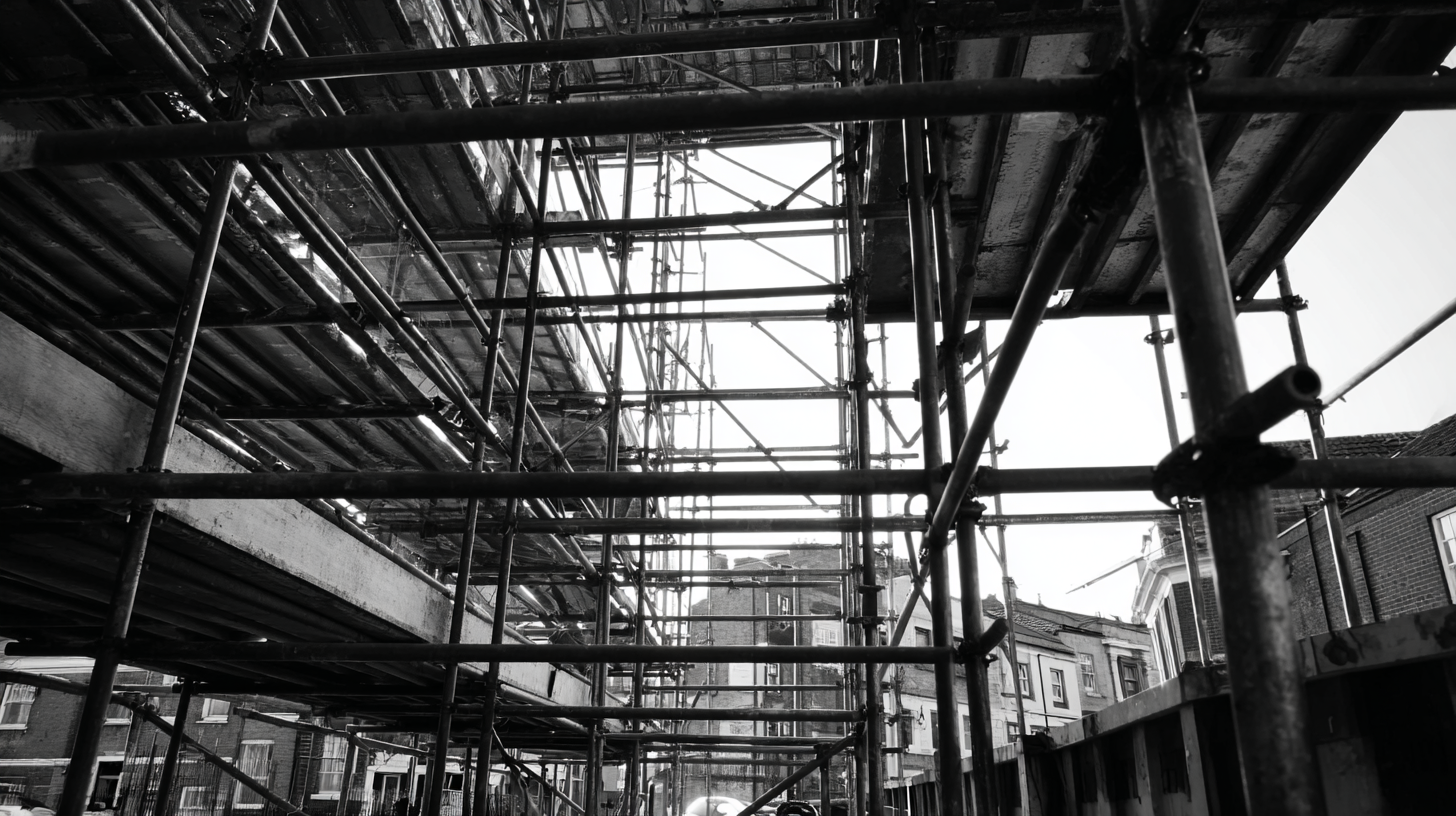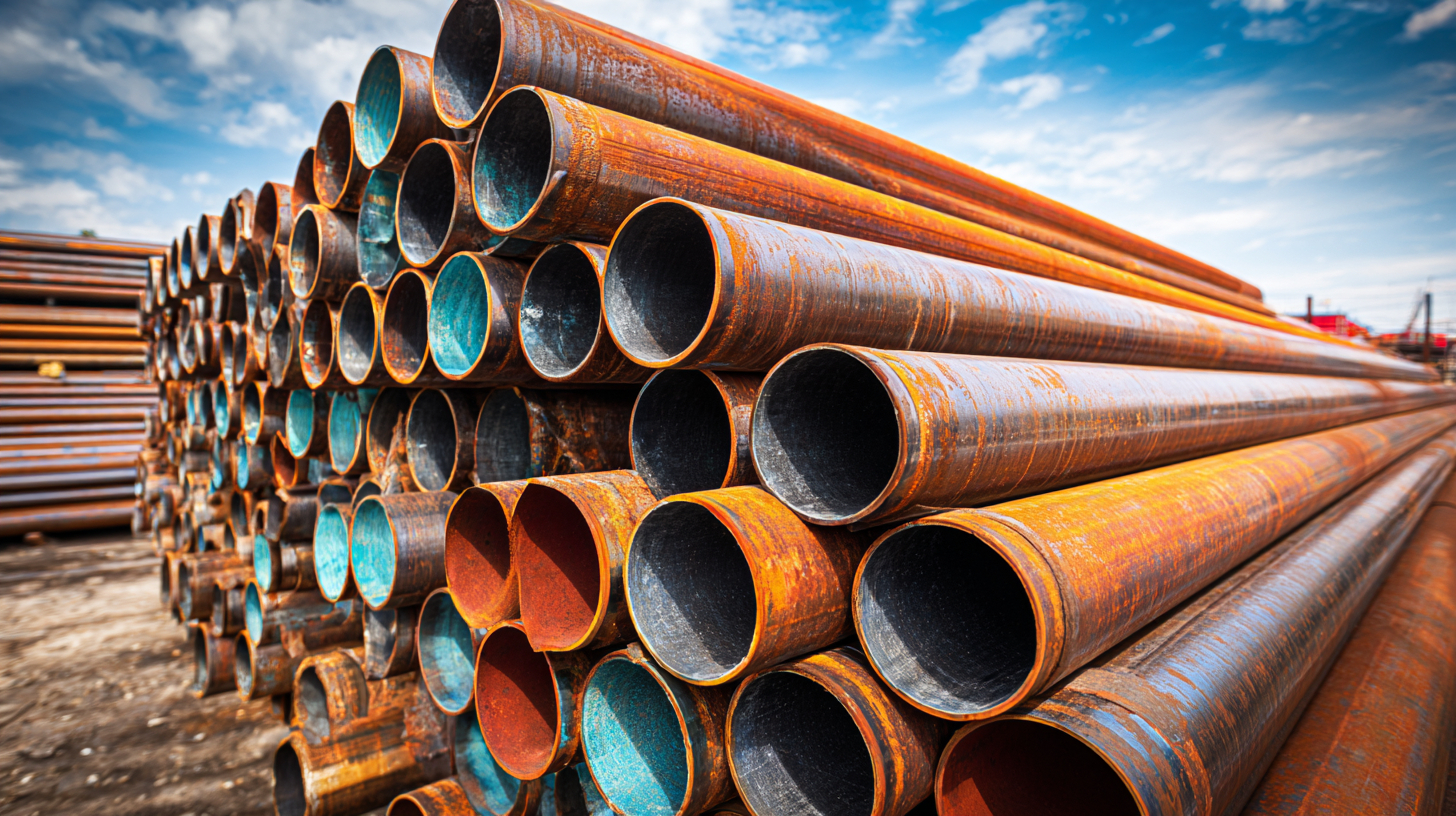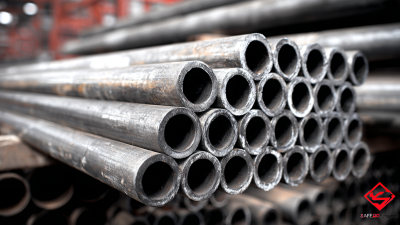 +86 18531741341
+86 18531741341
Leave Your Message
In the construction industry, the selection of the right scaffolding pipe is crucial for ensuring safety and efficiency on job sites. According to a report by the Occupational Safety and Health Administration (OSHA), improper scaffolding accounts for 10% of all construction fatalities, underlining the importance of choosing high-quality scaffolding materials. Moreover, a study conducted by the National Institute for Occupational Safety and Health (NIOSH) highlights that more than 4,500 injuries occur annually due to inadequate scaffolding setups. With various types of scaffolding pipes available, understanding the different standards, materials, and load ratings is essential for project managers and construction workers alike. This guide aims to provide comprehensive insights into selecting the right scaffolding pipe for your construction projects, ensuring both compliance with industry regulations and the safety of your workforce.

 When selecting scaffolding pipe materials for construction projects, two crucial factors come into play: durability and cost-effectiveness. Durability is vital as scaffolding must support heavy loads and withstand harsh environmental conditions. Common materials include steel, aluminum, and plastic composites. Steel pipes, while heavier and potentially more expensive, offer exceptional strength and longevity, making them ideal for demanding construction sites. On the other hand, aluminum is lightweight and resistant to corrosion, which can lead to cost savings in transport and labor, although it may sacrifice some load-bearing capacity.
When selecting scaffolding pipe materials for construction projects, two crucial factors come into play: durability and cost-effectiveness. Durability is vital as scaffolding must support heavy loads and withstand harsh environmental conditions. Common materials include steel, aluminum, and plastic composites. Steel pipes, while heavier and potentially more expensive, offer exceptional strength and longevity, making them ideal for demanding construction sites. On the other hand, aluminum is lightweight and resistant to corrosion, which can lead to cost savings in transport and labor, although it may sacrifice some load-bearing capacity.
Cost-effectiveness is another critical consideration. It's important to assess both the upfront investment and the long-term maintenance costs associated with different materials. While durable materials may demand a higher initial expenditure, their extended lifespan can significantly reduce replacement frequency and repair expenses. Additionally, considering the potential for recycling and resale value of materials like steel and aluminum can also influence overall project costs. Thus, a balanced approach that evaluates both durability and financial implications will lead to an informed decision that optimizes performance and budget for construction projects.
When selecting scaffolding pipes for construction projects, understanding load capacity is paramount for ensuring safety and compliance. Load capacity refers to the maximum weight a scaffolding system can safely support, which includes the weight of workers, tools, and materials. Scaffolding pipes must be chosen based on their ability to withstand these forces under various conditions, taking into account factors such as height, environmental conditions, and the duration of the project. Failure to consider load capacity can lead to catastrophic failures, endangering both workers and the integrity of the structure being built.
In addition to safety, complying with industry standards and regulations is crucial when selecting scaffolding pipes. Each project may have specific load requirements dictated by local building codes and safety regulations. By thoroughly assessing the load capacity and ensuring that scaffolding materials meet compliance standards, construction managers can mitigate risks associated with improper scaffolding use. Ultimately, prioritizing load capacity in the selection process not only safeguards the welfare of the workforce but also contributes to the overall success and reliability of the construction endeavor.

When it comes to selecting scaffolding pipes for construction projects, understanding the differences between steel, aluminum, and plastic options is crucial. Steel scaffolding pipes are widely recognized for their strength and durability, making them a preferred choice in heavy-duty applications. According to the Occupational Safety and Health Administration (OSHA), steel scaffolding can support loads of up to 75,000 pounds per unit. However, its weight can pose challenges for transport and assembly.
On the other hand, aluminum scaffolding pipes offer a lightweight alternative, providing easy handling and quick setup times. With a weight-to-strength ratio that is often 20% lighter than steel, aluminum pipes are ideal for projects that require mobility and speed. The American National Standards Institute (ANSI) states that properly maintained aluminum scaffolding can still support significant loads, typically around 50,000 pounds per unit.
Tip: Always consider the specific requirements of your project when choosing between materials. If your project involves frequent relocation, aluminum may be the better choice. Conversely, for longer-term installations where load capacity is key, steel could be more beneficial. Also, while plastic scaffolding pipes might be lighter and resistant to corrosion, they are generally only suitable for light-duty applications and should be used with caution.
Tip: Always check for compliance with local safety regulations and load specifications when selecting scaffolding pipes to ensure a safe working environment.
| Type | Material | Weight (kg/m) | Load Capacity (kg) | Cost per Meter ($) | Applications |
|---|---|---|---|---|---|
| Standard Pipe | Steel | 6.5 | 3000 | 5.00 | Heavy-duty construction |
| Standard Pipe | Aluminum | 4.5 | 2000 | 7.00 | Light weight projects |
| Standard Pipe | Plastic | 3.0 | 1000 | 2.50 | Indoor scaffolding |
| Heavy Duty Pipe | Steel | 8.0 | 5000 | 8.50 | Large scale operations |
| Lightweight Pipe | Aluminum | 3.5 | 1500 | 6.50 | Residential projects |
When selecting scaffolding pipes for construction projects, understanding the impact of pipe diameter and length on stability is crucial. A pipe's diameter plays a significant role in withstanding various loads. Generally, thicker pipes can bear more weight, making them suitable for heavy-duty applications. However, while larger diameters provide better stability, they can also complicate handling and increase costs. Thus, it's vital to balance the requirements of the project with the practicalities of using larger diameters.
The length of the scaffolding pipe also plays a pivotal role in stability. Shorter pipes can offer greater strength, reducing the risk of bending and collapse under pressure. Conversely, longer pipes may be necessary for larger structures but often require additional support or bracing to maintain stability. A well-designed scaffolding system considers both pipe lengths and diameters to ensure safety and effectiveness.
**Tips:** Always assess the specific load requirements of your project before choosing pipe dimensions. Consider conducting tests or simulations to determine how different configurations affect stability. Additionally, consult with scaffolding professionals who can provide insights based on industry standards and best practices.
When selecting scaffolding pipes for construction projects, understanding industry standards and regulations is crucial to ensure safety and compliance. The scaffolding industry is governed by various guidelines, such as those issued by the Occupational Safety and Health Administration (OSHA) and the American National Standards Institute (ANSI). These regulations outline specifications for materials, load capacities, and installation procedures, helping to mitigate risks associated with scaffolding use.
In addition to federal regulations, it is vital to consider local building codes and standards that may impose additional requirements based on the specific characteristics of a project. For instance, certain environments may require scaffolding systems to withstand higher wind loads or be made from corrosion-resistant materials. By thoroughly evaluating these standards, construction managers can make informed choices about the type and specifications of scaffolding pipes to use, ensuring both safety for workers and adherence to legal obligations.






